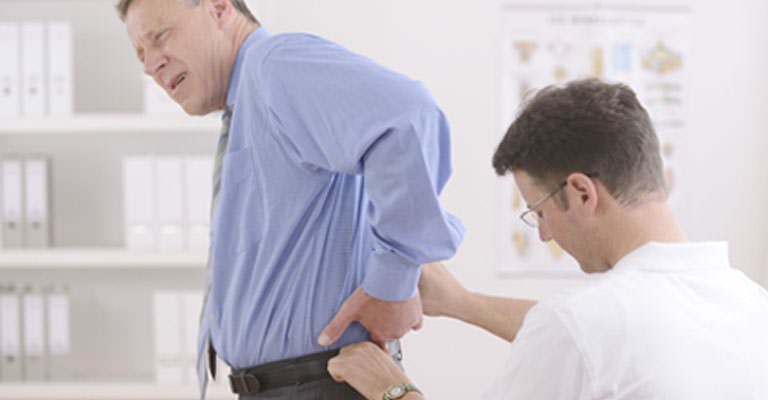8 Symptoms That May Mean You Have a Herniated or Bulging Disc?

8 Symptoms that may mean you are experiencing disc or herniation problems in your back.
Pain – the severity and location of the pain depend upon which disc is herniated and how large the herniation is Pain may spread over the buttocks, down the back of one thigh and into the calf Pain may be in one or both legs Numbness, tingling, or weakness in the legs or feet Bowel or bladder changes In severe cases inability to find comfort even lying down Inability to fully straighten your neck or back Numbness, tingling, or weakness in one or both arms
Definition: Between the vertebrae of your spine are 23 discs which act as a spacer and shock absorber. These discs have soft, gel-like centers surrounded by layers of fibrous tissues. Sometimes, due to an injury or just aging, the material in the middle of a disc pushes to one side or even ruptures. This is called a bulging or herniated disc. Where it occurs: Bulging or herniated discs can appear in the Neck (Cervical Spine), Low Back (Lumbar Spine) and Middle and Upper Back (Thoracic Spine). Chiropractic care works on correcting misaligned or out-of-place vertebrae and can remove the pressure placed on the nerve endings that line the surface of the joint and course through the space between the joints, reducing pain and improving flexibility and function.
The following strategies may help you reduce your chance of having a herniated disk: Chiropractic Adjustments. Practice good posture – standing and sitting straight, keeping your back straight when lifting. Maintain a healthy weight. Exercise regularly. Ask your HealthSource chiropractor about exercises to strengthen your back and stomach. Don’t wear high-heeled shoes. If you sit, get out of your chair every 20 to 25 minutes and walk for several minutes.
For more information please locate and contact the HealthSource location nearest you by visiting www.healthsourcechiro.com.
